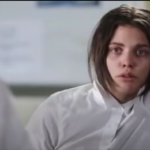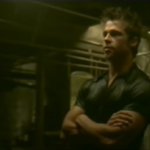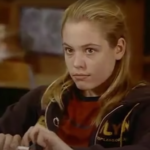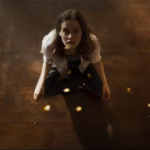Abstract: In the realm of under-the-radar horror flicks, “Dead End” stands out as a macabre journey both literally and metaphorically. Directed by Jean-Baptiste Andrea and Fabrice Canepa, this film defies conventional horror tropes, offering viewers a blend of psychological terror and dark humor. As we delve into this road trip turned nightmare, we’ll dissect how “Dead End” delivers its chills and thrills.
The Unexpected Horror of the Beaten Path
Reimagining the Road Trip Genre: “Dead End” provides a fresh take on the road trip narrative, turning a family’s Christmas Eve drive into an unexpected descent into horror. The familiar becomes foreboding, proving that sometimes the scariest paths are the ones we’ve traveled a thousand times before.
Cast and Performances: Driving the Terror Home
A Family Affair of Fear: The cast of “Dead End,” led by Ray Wise and Lin Shaye, gives life to a family dynamic that is both relatable and unnervingly off-kilter. Their performances are critical in anchoring the film’s surreal elements to a sense of grounded reality, making the ensuing terror all the more potent.
Crafting Suspense in Familiar Settings
Direction and Tone: A Balancing Act of Horror and Wit: Andrea and Canepa masterfully balance suspense with moments of unexpected humor. The film’s pacing is deliberate, allowing the tension to build steadily, while the directors’ use of irony provides a counterpoint to the horror, enhancing the overall narrative without undermining the fear factor.
Exploring “Dead End’s” Thematic Detours
The Twists and Turns of Life, Death, and Destiny: “Dead End” explores the themes of fate and the unknown, questioning how well we truly know our loved ones and what secrets lie just beneath the surface. It’s a poignant examination that resonates on a deeper level than the typical genre fare.
A Universal Journey into Darkness
Relatable Fears in an Inclusive Narrative: While “Dead End” doesn’t specifically address inclusivity in its casting or story, it touches on the universal dread of the unknown and the hidden terrains within familial bonds. This approach ensures the film’s appeal cuts across a diverse audience, inviting everyone on its eerie excursion.
Visuals and Soundscape: Crafting a Haunting Ambiance
Atmospheric Storytelling Through Sight and Sound: The film’s cinematography captures the claustrophobia of the family car and the oppressive darkness of the surrounding woods with a haunting simplicity. Combined with a soundscape that is subtly unnerving, “Dead End” crafts a chilling atmosphere that lingers.
Final Assessment: A Twisted Road Well-Traveled
Score: 3.7 out of 5 Stars “Dead End” secures a 3.7 out of 5 stars for its ability to take viewers on a terrifying ride that is as psychologically engaging as it is unexpected.
Closing Thoughts: “Dead End” might not be a juggernaut of the horror genre, but it is a dark gem worth discovering. It shows that horror can manifest in the simplest of settings—a car ride, a familiar road, the company of family—and transform them into a canvas for fear and madness. With its mix of dark comedy and suspense, “Dead End” is a cult classic that proves the power of horror lies in the journey, not just the destination.
Trailer:






